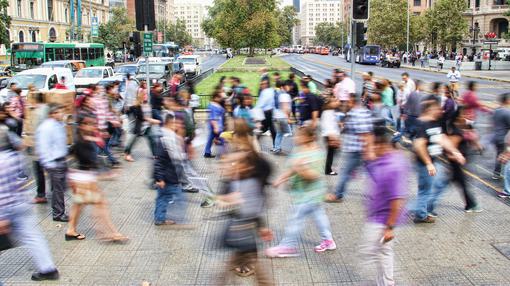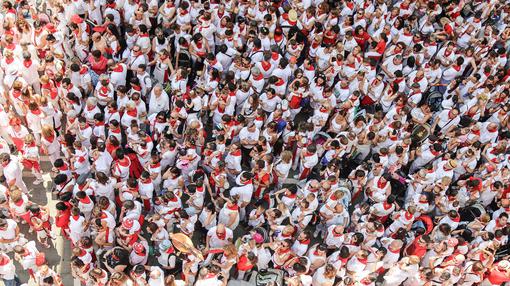Power to the people – sustainable energy through human routines

Categories: Technology
In 2018, several of the ways that we produce power exist in far more refined forms than their 19th-century industrial period counterparts and, complemented by renewable energy sources, help to propel the world forward at a previously unimaginable rate. However, another source of energy used today remains the same as it did long before the factory: us.
Roll up your sleeves
Without sounding too clinical, we will call this energy source ‘deliberate human effort', as we have specific goals in mind and deliberately work to achieve them. Attempting to use human effort for large-scale power generation would present various logistical issues. For instance, a transmitter’s efficiency is around 96% while our food-to-mechanical energy efficiency sits around 18-26%. Moreover, given the plethora of technical jobs required to operate the vast number of industries around the world, Return on Investment (ROI) is, on average, higher when people enter specific, less labour-intensive roles.
Given that more and more people have less and less time, and that sustainable practices are paramount to meeting global energy challenges, perhaps the way forward is through 'non-deliberate human effort' – innate, routine-driven human activity and its natural and social by-products. As such, we thought we’d list three innovative ways that we can leverage non-deliberate human effort to produce energy sustainably.
Footfall
Wherever you go as you traverse about your day – be it the gym, your favourite café, the office, or the path you take while walking the dog – you use and produce small amounts of energy as you propel yourself forward. Individually, this energy may not do all that much, but with the number of people in the world moving around it starts to add up. Importantly, given the increasing number of densely populated areas – footfall produces a significant within relatively small geographical areas. Previously this energy would go entirely to waste, but innovative technologies are starting to convert and store it to power nearby facilities.
Piezoelectricity, for example, is generated by particular materials when exposed to compression forces. Each time someone moves across a piezoelectric walkway or dancefloor, it produces a small amount of energy. Multiply that by the number of people walking or dancing around and, again, it starts to add up. Pavegen, as another example, is a company using flooring technology to convert the kinetic energy of footsteps into off-grid electricity and data.
According to their website, the weight of a person walking across the tiles “causes electromagnetic induction generators to vertically displace, which results in a rotatory motion that generates off-grid electricity”.

Body Heat
If you’ve ever experienced a commute through subway stations at peak hour, then you will know that two things rapidly become apparent. Firstly, people can squeeze into surprisingly tight spaces. Secondly, it gets hot. Very hot.
Naturally, the effect of body heat isn’t exclusively linked to the unpleasant experiences you’ll occasionally find in subway stations. In fact, from huddling together for warmth to powering your phone – the energy we produce all year round has various beneficial applications. The Mall of America, for example, receives such a high number of visitors that the combined body heat removes the need for central heating.
Instead, it channels the heat we produce through pipes and tanks to keep the building warm. But, to return to the subway – engineers are finding new ways to apply conductive technologies, transferring this heat to neighbouring buildings. In Stockholm, for instance, Central Station's ventilation system captures body heat to warm water in several underground tanks. This water then gets pumped through a series of pipes to the adjacent building and combines with the heating system.
On top of this, new research is underway to power devices directly using our bodies by converting the body heat we naturally produce into energy. According to Professor Jun Chen at the University of Wollongong: "Even when we are doing nothing as adults we are losing 50 to 100 volts per day, through the heat exchange with our environment".

Your morning coffee
While this isn’t technically human-powered energy (and in fact, you could say the relationship operates in reverse some mornings), it is another example of engineers taking what humans do every day and using it to produce energy sustainably.
Whether your morning caffeine intake takes form in a cappuccino, a double espresso, a Kopi Peng (Malay for an enjoyable iced coffee drink served with condensed milk), or a non-fat triple shot latte with caramel flavouring served at 65°C – you’re producing coffee waste. Ordinarily, waste is a problem. However, the increased focus on biofuels as alternative energy sources has led to the application of coffee waste as fuel in homes and buses. In fact, coffee waste is a relatively high-yield energy source.
10kg of coffee waste makes up to two litres of biofuel, and we produce over six million tonnes of it each year. As Dr Chris Chuck, Whorrod Research Fellow from our Department of Chemical Engineering at the University of Bath, explained: “This oil also has similar properties to current feedstocks used to make biofuels. But, while those are cultivated specifically to produce fuel, spent coffee grounds are waste. Using these, there’s a real potential to produce a truly sustainable second-generation biofuel.”
For now, a lot of coffee waste will still end up in landfill sites. However, as biofuels gain commercial traction, your morning ‘Cup of Joe’ will perform an essential function in sustainable energy production.

Looking ahead
Given how long industrial-period energy processes have had to refine their yield, the energy produced by the innovations listed above is, understandably, comparatively limited. However, interest in and engagement with alternative energy sources is on the rise.
With this, financial and business opportunities will flourish, and both the scale and energy output of these solutions will theoretically increase as well.
By developing technologies that seamlessly integrate into the lives of citizens, non-deliberate human effort can provide a sustainable source of energy as people go about their weekly, daily, or hourly routines.
Photo by Timon Studler on Unsplash
Photo by mauro mora on Unsplash



